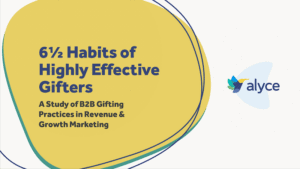
The #5to9™ is the life we lead outside of our roles and responsibilities in the workplace that make us uniquely our own.
Marketers who know their worth, know they’re only as good as their skills of persuasion. No matter what you sell – or who you sell it to – your job as a marketer is to use your powers of persuasion to appeal to your prospective customers. When it comes to appealing to the emotional side of your prospects and customers, it’s all about the #5to9™.
What does the #5to9™ mean?
The #5to9™ is the life outside of work that each of us dives into as soon as we step away from our job titles. The things we dedicate our time and energy to when we’re not fulfilling the responsibilities attached to our careers. These are our passions, our hobbies, and our focal points that serve as an extension to our personal identities.
While most of us no longer work from 9 a.m. to 5 p.m. ( sorry, Dolly ), this concept represents the dual lives we live throughout our days. By day, we moonlight as data points that fit perfectly into personalization tokens like [job title] who works at [company]. But by night, we shed the firmographics and segmentation and become the person behind the persona.
Nobody likes being treated as a transactional data point. Nobody likes being communicated with as one-of-many. The #5to9™ is where we can turn transactions into interactions; where one-to-many “touches” ( <- such a creepy term ) turn into one-to-one moments.
The #5to9™ is where each of us is acknowledged and celebrated for the distinct qualities, when strung together, make use uniquely our own.
Why is the #5to9™ so important?
In the martech landscape alone, there are 8,000 different solutions. 8,000.
In just the content and experience category alone, there are 2,000 products. When placed side-by-side, these products aren’t offering anything particularly different from one another. In fact, they’re relatively identical to one another.
Take an even closer look and the attempts to persuade you to buy one of these products aren’t all that different. It’s all done through the same channels, using the same tactics, saying roughly the same thing. Marketers and sales reps alike have a tougher time than ever capturing and keeping the attention of their audience.
Which begs the question: how do you stand out in a sea of sameness? You build bonds.
What Aristotle taught us about the importance of the #5to9™
If you’re looking for some inspiration to hone your power of persuasion, look no further than the texts from any beginner’s Philosophy course.
Originally identified in Aristotle’s in Rhetoric, the three primary elements of persuasive communication can be boiled down to three primary elements: Ethos, Logos, and Pathos.
Ethos:
Literally translated, Ethos means “character” in Greek. It implies the appeal to authority or credibility to build trust in a person or company behind the persuasion.
Ethos is what we today would consider an influencer strategy. While I’m sure Aristotle wasn’t exactly picturing the likes of the Kardashians personifying this element of persuasion, using authority to establish credibility works.
“Four out of five doctors recommend ….”
If you’ve ever seen or heard an ad with that phrase, you’ve been Ethos’d.
Using authority and credibly is one of the main reasons we continue to attend webinars, use our customers for references, and scroll through our LinkedIn feeds leaving likes on people’s thought leadership.
Logos:
Literally translated, Logos means “ reason” or “plan” in Greek. It implies the appeal of logic or reason as the basis of persuasion.
To appeal to logic and reasoning, logos depends on facts, data points, charts, figures, and proof points to validate a claim. Aristotle believed that people are rational; when presented with research and evidence, people would use logic to reason their way through a decision.
“Data-centric marketers are almost 3X times more likely to have increased revenues”
The example above is a common way to use facts to drive the desired thought-patterns your audience has around the concept you’re persuading them on. It also happens an example of logos – using logos – to persuade you to use data in your marketing. Pretty meta, huh?
Pathos
Literally translated, Pathos means “ suffering” or “experience” in Greek. It implies the appeal of
emotion as the basis of persuasion.
Aristotle believed that creating an emotional response was an effective way of persuading an audience of an argument. By using engaging storytelling or an impassioned plea, an audience is able to establish an emotional bond to the argument at hand.
“You will live seven and a half minutes longer than you would have otherwise, just because you watched this talk.” – Jane McGonigol, TEDTalk
The better way, the more persuasive way is to create an emotional moat around your offering by relating to your customers on a personal level and designing an experience just for them.
Pathos and the #5to9
Pathos is the appeal to emotion. Playing with our children, writing a new song, hiking a new trail, hitting the open road. What better place for someone to experience life’s best emotions than in the #5to9?
The use the #5to9 to build an emotional bond with your audience.
Genuine, authentic bonds.
To build bonds, you must first acknowledge what makes that person unique – what they do in their #5to9 – and relate to that person on a one-to-one level. At the end of the day, people want to do business with folks who take the time to listen, learn, and care.
Stop selling. Stop marketing. Stop servicing.
Start bonding.






